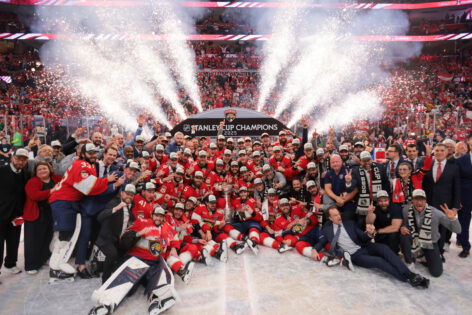Understanding the Game: A Diminished Stanley Cup Experience
"We lost to a really good team. Nobody quit, nobody threw the towel in, but they’re a heck of a team. They’re back-to-back Stanley Cup champions for a reason," stated Connor McDavid, captain of the Edmonton Oilers, after their 5-1 defeat to the Florida Panthers in Game 6 of the Stanley Cup Finals. This poignant remark encapsulates not only the personal disappointment of a captain but also reflects a broader narrative—one that highlights the challenges faced by the NHL in retaining fan engagement.
The Anticipation vs. Reality of Game 6
Despite initial enthusiasm, particularly with a staggering 3.8 million viewers averaging for the first five games, Game 6 was met with surprising indifference. The NHL had garnered a promising start, with viewers peaking at 4.5 million for Game 1 and 4.8 million for Game 2. Yet, as the final showdown unfolded, something was clearly amiss; the fervor that typically accompanies such high-stakes matchups appeared to fizzle out.
Braylon Breeze shared on X that Game 6 averaged just 4.327 million viewers across English and French networks, a drop of 4% from the previous year’s series. This decline raised vital questions about the league’s ability to connect with its audience, especially when considering the overall thrilling nature of this year’s playoff series.
Factors Contributing to Lackluster Viewership
Several intertwined factors contributed to the subdued viewer response.
-
Broadcasting Limitations: A significant hurdle was that the Finals were broadcast on TNT rather than the more mainstream networks like ABC or NBC. Ed Desser, a seasoned NBA executive, pointed out the challenges facing all sports networks in a rapidly evolving entertainment landscape. While the TNT deal brought in financial benefits, it inadvertently limited viewership reach. Ratings have suffered as TNT lacks the brand recognition associated with more traditional sports networks, making it harder for casual fans to find the games.
-
Market Representation: The representation—or lack thereof—of teams from major U.S. markets posed another challenge. With Edmonton as the sole U.S. team in the Finals, American viewers, especially those in larger markets, might have felt less inclined to tune in. Florida’s relatively small market, featuring two teams in the state, further complicated matters by potentially diluting the viewer base.
- Changing Viewer Demographics: An evolving audience can also influence viewership. Casual fans, who may not follow the NHL closely, found it more challenging to engage when the games were not presented on familiar platforms. Desser emphasizes the struggle of competing not just with other sports channels but with the entire spectrum of high-quality television content available today.
Insights from Industry Executives
Industry professionals like John Kosner from ESPN expressed disappointment over the low engagement rates, especially given the remarkable quality of the series. Kosner emphasized that the excitement of past playoff matchups and the talent of star players should have translated into greater viewer interest. However, the disconnect suggests deeper-rooted issues that the NHL must address.
The Bigger Picture: Improving Future Viewership
The stark statistics paint a troubling picture for the NHL: with the overall series averaging just 2.5 million viewers, a drop from last year’s 2.6 million average, there’s a clear challenge ahead. But does this indicate fans are abandoning hockey? Not necessarily. The NHL is in a healthier financial position, benefitting from lucrative media contracts and rising player salaries. It merely requires a strategic overhaul to reconnect with its audience.
The path forward involves re-evaluating broadcasting strategies and possibly returning to networks that provide broader visibility. As Desser notes, the shifting landscape of sports broadcasting necessitates strategic agility and innovative approaches to capture viewers’ attention.
Officiating, Broadcasting, and Engagement Strategies
To elevate viewer numbers, the NHL might need to consider revamps in officiating, broadcasting, and game commentary. A return to network television could restore a sense of familiarity while targeting more casual fans.
Moreover, as the league contends with the distraction of an ever-expanding entertainment milieu, captivating storytelling, strategic marketing, and consistent engagement initiatives will be crucial. The NHL needs to remind both old fans and newcomers why hockey is exhilarating, ensuring they don’t miss out on the excitement of the game.
A Historical Shift in Viewership Trends
The viewer data also highlights a significant historical shift; this marked the first time since 1999 that a Game 6 was broadcast on cable rather than network television, reflective of overall trends within the sport. The implications of this shift are evident—if the NHL wishes to rekindle its je ne sais quoi, it must rethink its media strategies and rekindle the passion that has historically fueled the sport’s fan base.
Through strategic innovations and deeper connections, the NHL has a unique opportunity to revive enthusiasm for its games, turning fleeting moments back into unforgettable experiences that fans will eagerly tune in to witness.


